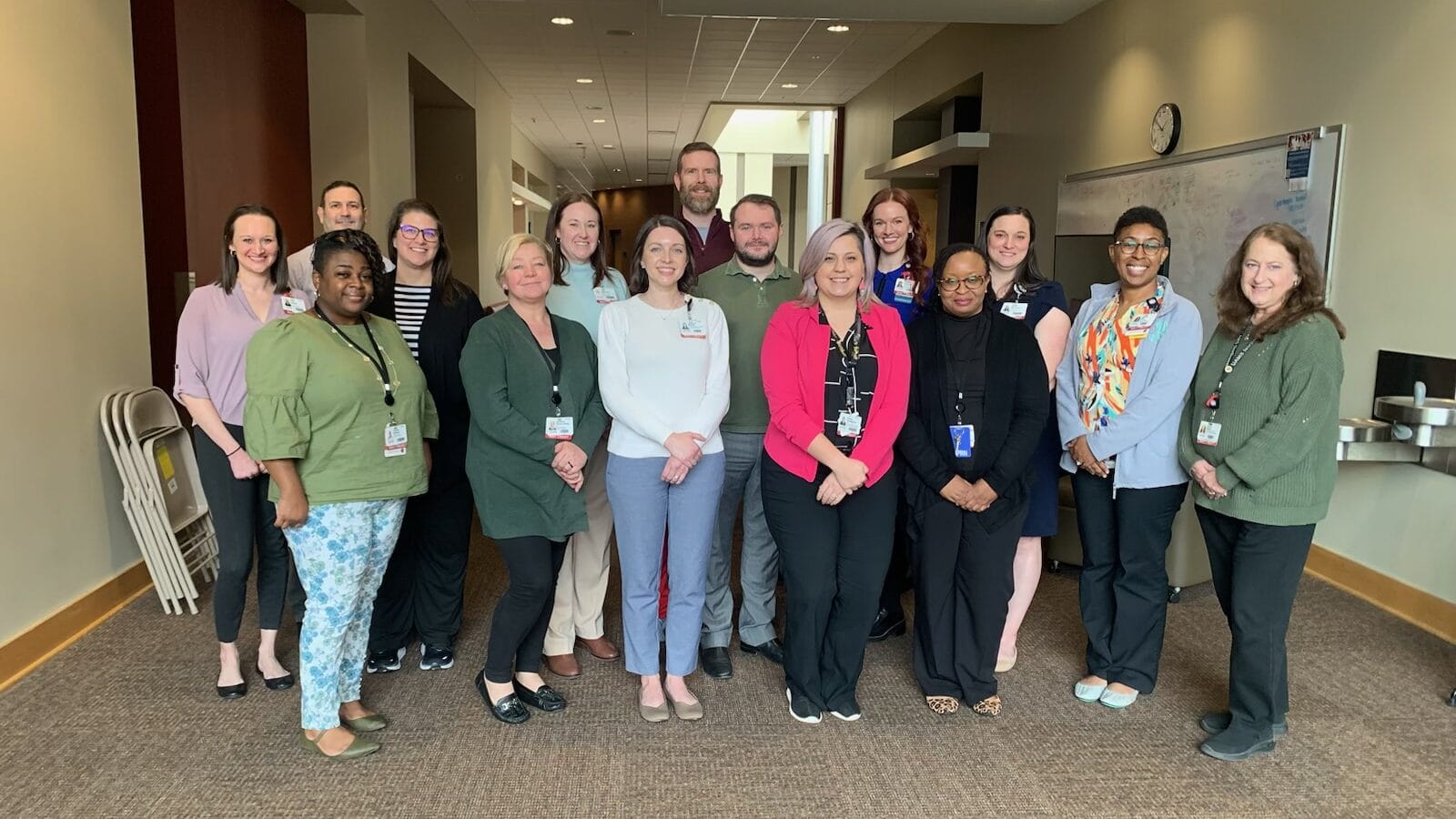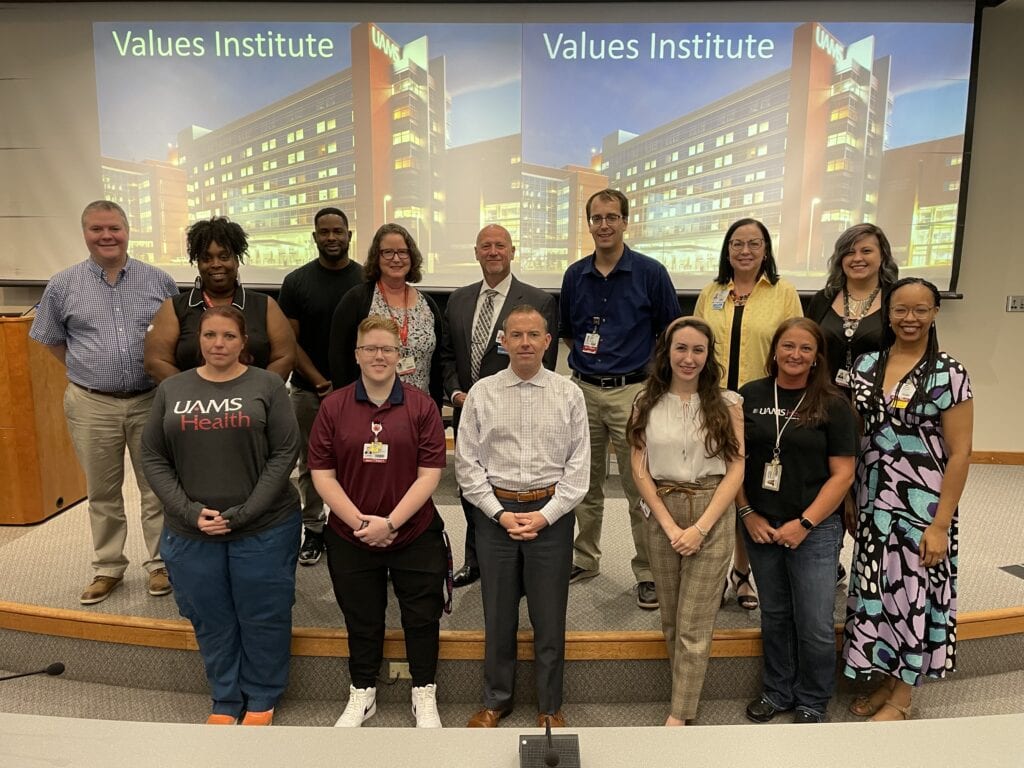2024 Q2 Organizational Development Quarterly Newsletter
Division of People and Culture | April 1, 2024 | Issue 1

2024 Q2 Organizational Development Quarterly Newsletter
Division of People and Culture | April 1, 2024 | Issue 1




Conflict resolution within teams is a continuous occurrence. Yet, a compelling narrative in William Ury’s book, “Possible: How We Survive (and Thrive) in an Age of Conflict,” shifts our perspective toward a new approach to finding solutions.
A Librarian’s Lesson in Conflict Resolution
In a passage from William Ury’s book, a story unfolds about two students in a library opening and shutting a window. The two students found themselves in a heated conflict over their opposing needs for the window. The librarian in the room notices the two students arguing over this window. She decides to intervene to help resolve the conflict. She starts by asking one of the students why they kept opening the window. The librarian learns that this student wanted some fresh air in the library to help them study. She then turns to the other student who kept closing the window to ask why they wanted it closed. This student explains that the breeze from the open window was blowing their papers around making it hard for them to study. The librarian thinks for a moment and then decides to close the window. She walks to a different room and opens a window in that room. She explains that now the fresh air will come through the library but the draft from the window will no longer disturb the other student’s papers, ultimately this settles the conflict and everyone wins.
Compromise vs. Integrated Solutions
The author, William Ury goes on to explain that we often think that “compromise” is the solution to our conflicts, however, he explains that compromise comes from each party sacrificing something. A compromise in our story might look like keeping the window half open and half closed. Ultimately while this is a solution, it ensures that neither party is completely satisfied. William Ury suggests that there is a way for both parties to win and no one to lose. He uses the term “integrated solutions”.
Integrated Solutions
Integrated solutions refer to approaches in conflict resolution or problem-solving where the needs and interests of all parties are fully met without requiring compromise. Instead of each side giving something up, an integrated solution finds a way to satisfy everyone’s underlying needs, often through creative and innovative thinking. This approach encourages looking beyond the immediate conflict to understand the deeper concerns of each party, leading to outcomes where everyone feels they have won.
Why Use Integrated Solutions for Conflict Resolution and Problem-Solving
Using integrated solutions in conflict resolution and problem-solving is advantageous because it fosters a collaborative environment, encourages innovative thinking, and leads to sustainable and mutually beneficial outcomes. By focusing on the underlying needs and interests of all parties, integrated solutions avoid the drawbacks of compromise, where each side might have to give something up, potentially leading to dissatisfaction. Instead, this approach seeks to understand and address the root causes of conflicts, ensuring that solutions are comprehensive, inclusive, and supportive of stronger relationships and better problem-solving in the future.
Steps for Finding an Integrated Solution:
Post-Implementation Considerations:
Enhancing Team Involvement:
Consider getting your team involved in the brainstorming portion of the steps. This is a great way to improve your employee engagement. It helps by:
This approach leverages collective intelligence and cultivates a culture of collaboration and creativity, preparing teams to tackle future challenges with greater adeptness.
Give it a try with your team and let us know your feedback!

In the fast-paced and collaborative world of work, fostering open communication is a cornerstone of effective management. Yet, there is a fine line between collaborative interactions and disruptive interruptions, particularly when it comes to impromptu office drop-ins. Striking a balance is key, as overstepping this boundary may adversely affect productivity.
Think of your workplace like a home. Most of us enjoy having friends visit, but we usually prefer some notice. This advance notice allows us to prepare, ensuring we can fully focus on our visitors and make the most of our time together. An unexpected drop-in, even with the best of intentions, can disrupt our day. The same principle applies to the workplace – unplanned visits, no matter how well-meaning, can upset the rhythm of work, and potentially hinder productivity.
Consider another analogy – cooking. When you’re preparing a complex dish that requires precise timing and complete attention, an interruption can cause you to lose your place, affecting the outcome of the meal. Similarly, for an employee engrossed in a task, an unexpected interruption can derail their focus and slow the pace of work.
So, what’s the solution for managers who value open communication and collaboration? Here are some strategies to strike the right balance:
1. Implement Scheduled Open-Door Times: By setting dedicated office hours for open dialogue, employees can plan their work around these slots. This will allow them to give their undivided attention to the interaction, thereby making the conversation more productive.
2. Encourage the Use of Communication Tools: Use of project management and instant messaging platforms for non-urgent matters can help keep the flow of communication open without causing instant disruption. Employees can then address these messages at convenient times.
3. Promote the Practice of “Head’s Up” Communication: Encourage team members to send a quick message asking for a convenient time to chat before dropping by a coworker’s office. This small adjustment can significantly reduce the potential for disruption.
4. Foster a Culture of Respect for Workspace: Cultivate an environment where each team member’s workspace is respected. This involves understanding that a quiet or closed-off space is not a sign of disengagement, but a signal that deep work is happening.
By redefining the boundaries of open communication and understanding the fine line between collaboration and interruption, managers can foster a work environment that respects individual work styles, nurtures productivity, and ultimately drives team success.
We are thrilled to recognize and honor the outstanding graduates of the Values Institute program. This unique initiative, offered by Organizational Development, focuses on UAMS’ core values and their profound impact on fostering a fair and just culture, while enhancing the overall patient experience.
Throughout the program, participants engaged in interactive and thought-provoking training sessions, delving deep into the intricate ways our core values are interwoven into every aspect of our work at UAMS. Their commitment and dedication to exploring the significance of these values have truly been remarkable.
Values Institute is a part of the comprehensive UAMS LEAD suite of leadership development courses, available to all staff and faculty. LEAD, an acronym for Leaders Engaging, Achieving, and Developing, empowers individuals to further cultivate their leadership capabilities.
We extend our heartfelt congratulations to all the Values Institute graduates for their exceptional accomplishments and their unwavering commitment to upholding our core values. Together, we will continue to shape a bright future for Team UAMS and make a positive impact in the lives of those we serve.
The graduates of the 2023 Values Institute program are: Aaron Kurtz, Alexandra Vigil Edith Paal, Erin Robinson, Felisha Crosby, Henry Taylor, Jeffery Cook, Jennifer Cushing, Jodi Smith, Jonathan Gober, Laura Hays, Michael Mercer, and Shenitta Shephard.


Organizational Development has been focused on expanding our on-demand learning offerings. While this will be a continual work in progress, we have several courses available to you in Workday Learning.
These courses cover a variety of professional development topics such as navigating team dynamics, emotional intelligence, leading effective meetings, and many more! These courses are free and take an average of 20-40 minutes to complete. They are a fun and easy way to boost your workplace skills.
You can find a list of these trainings with descriptions and direct links to the Workday course on the Organizational Development Learn on Demand page.
Click Here for the Organizational Development Learn on Demand page
The table found at that link will be updated as new courses are added, so check back often.
In addition, you can always search the Learning Catalog directly in Workday.
Click Here for the Workday Learning Catalog
We are committed to providing quality professional development resources for UAMS. Many of these courses include a voluntary feedback survey at the end. This survey is anonymous and will help us know what you would like to see and how we can improve our offerings.
Thank you for all you do to support the UAMS mission.
If you have questions, please contact OrganizationalDevelopment@uams.edu.
